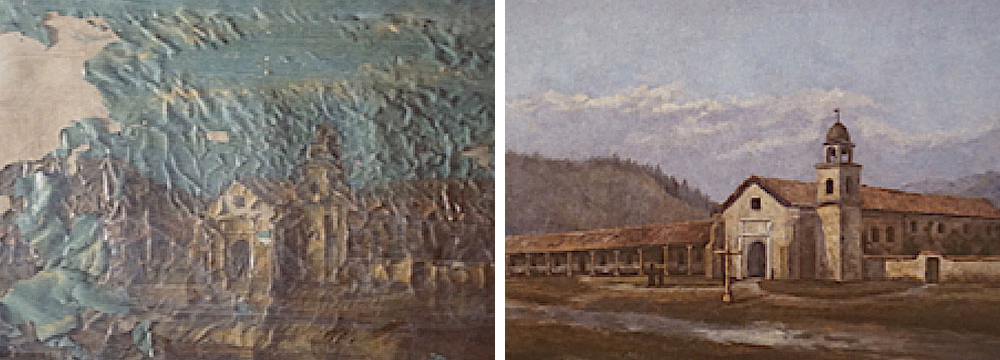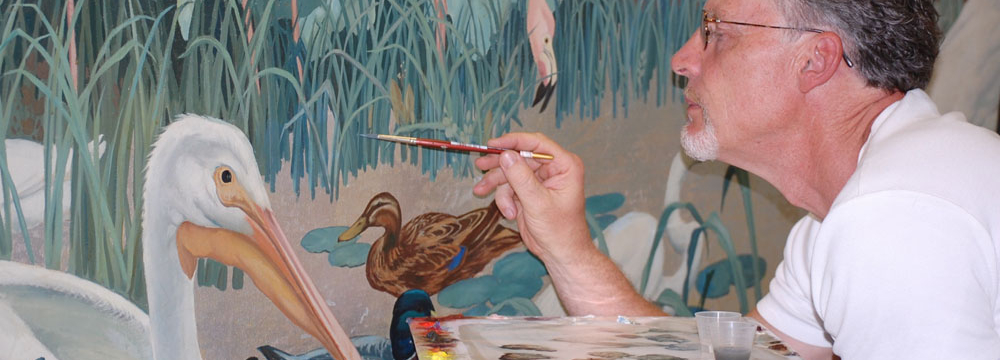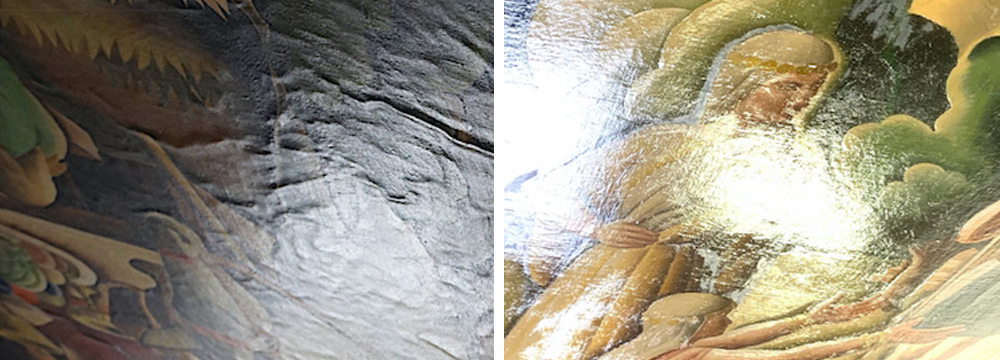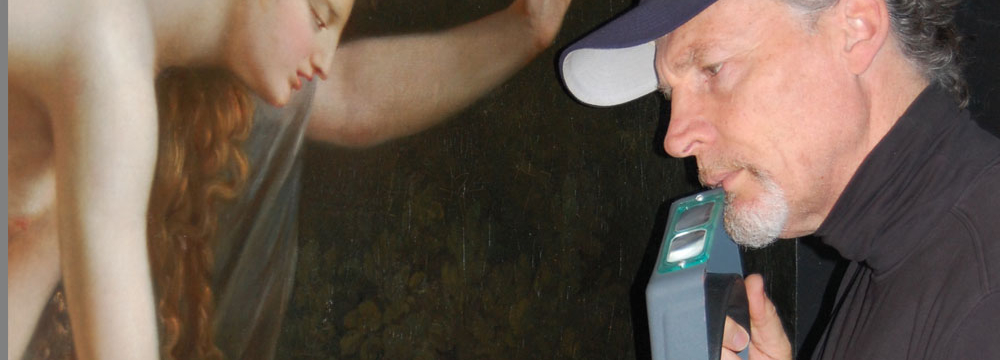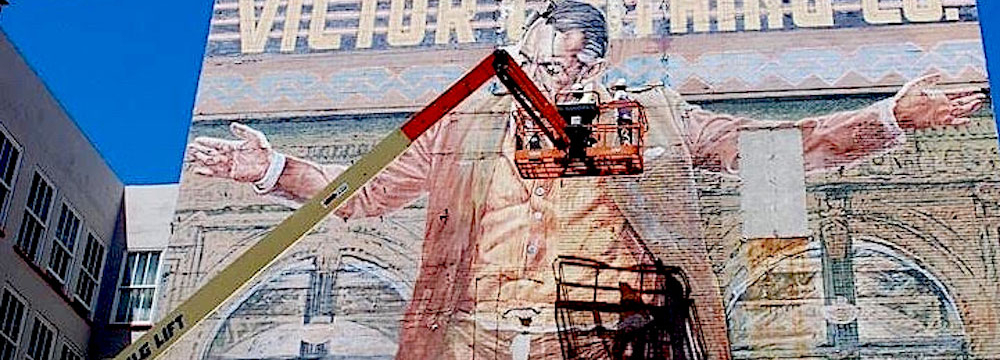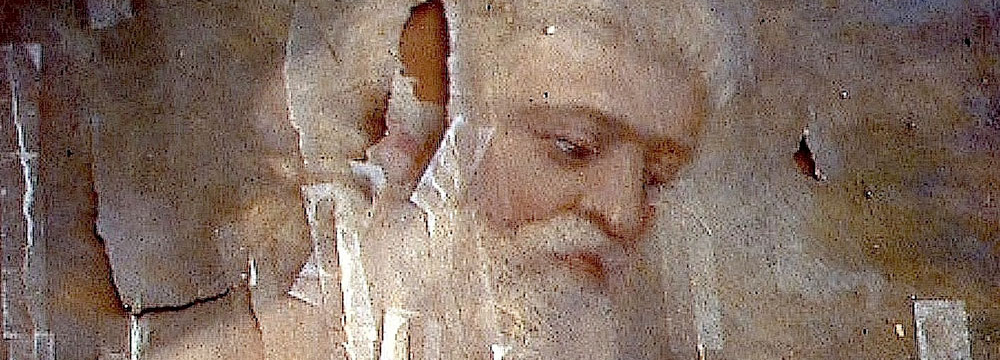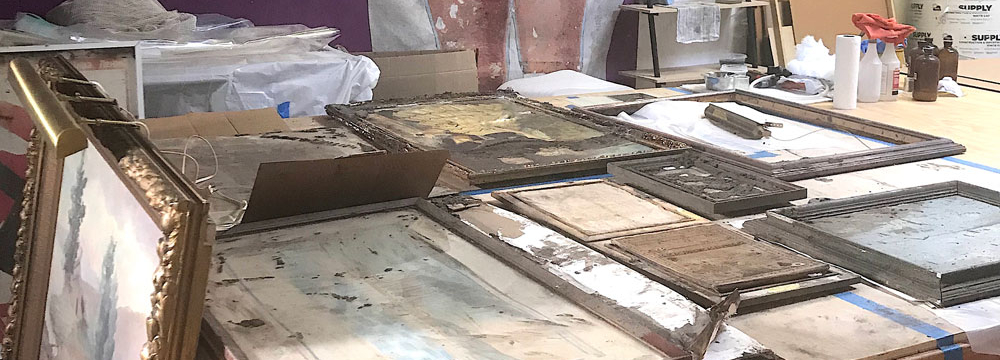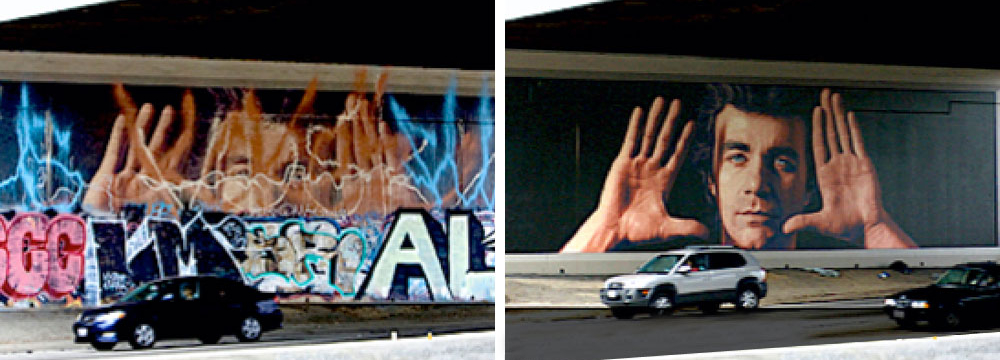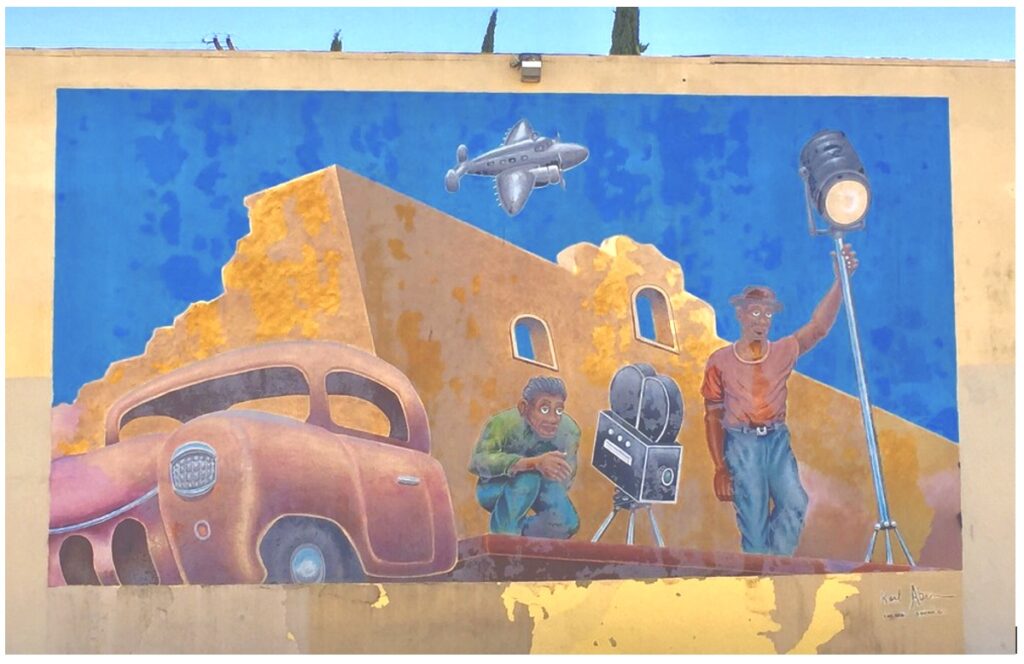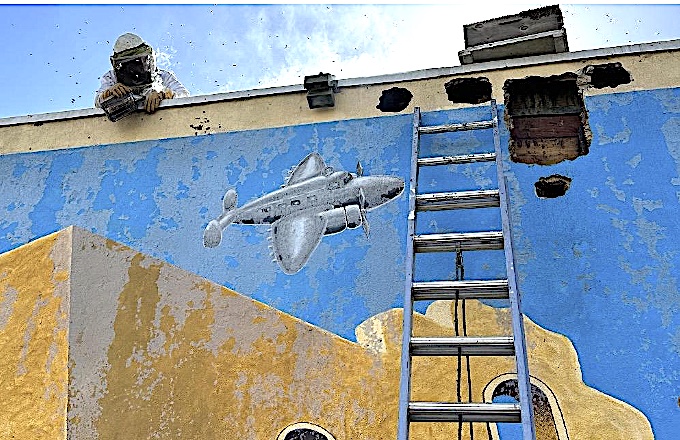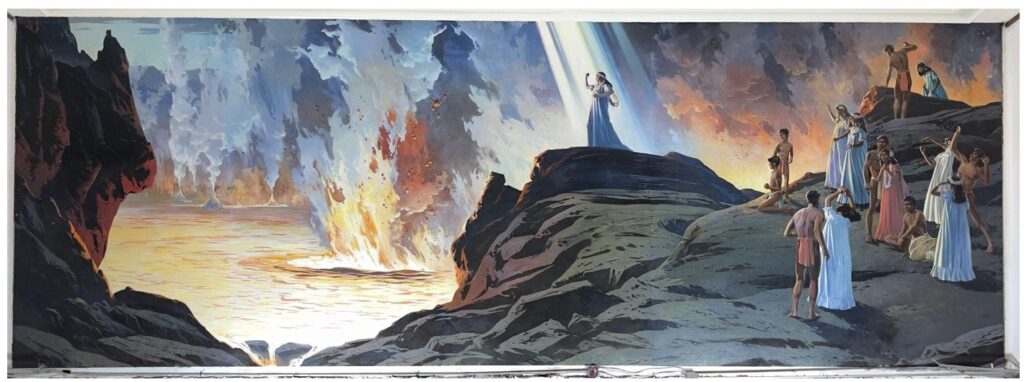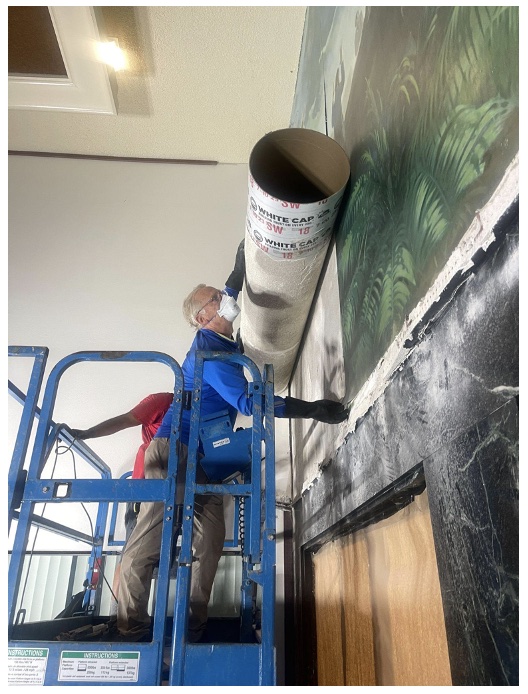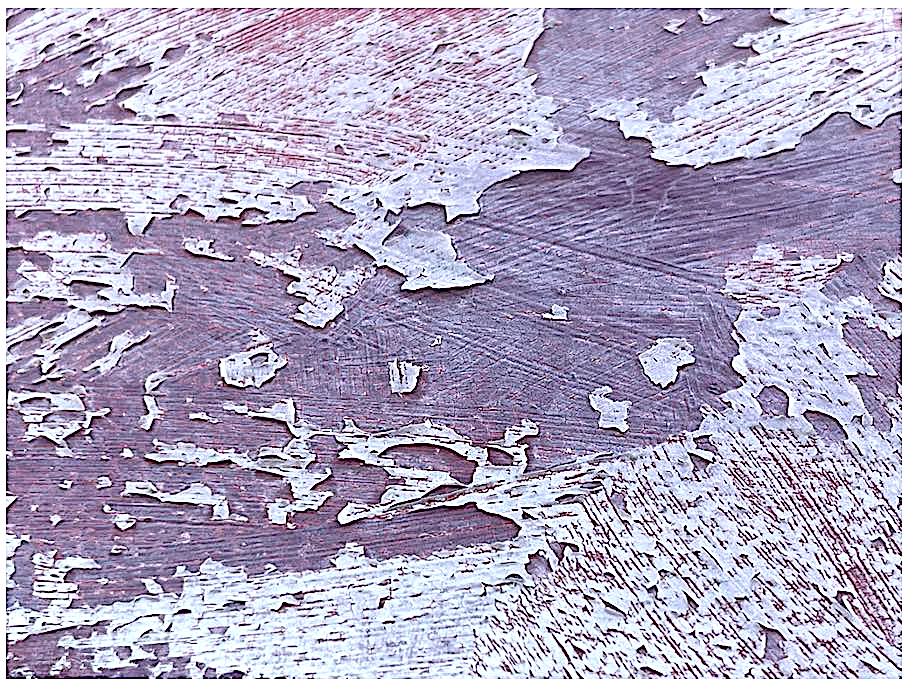This blog post has been syndicated at ExpertClick.com. What does it mean that this article is “ syndicated”? See end of article for explanation.
By Alice Taylor, FACL Conservation Technician 
During the past few weeks, Fine Art Conservation Laboratories has had the unique experience of requiring the help of beekeepers to save a large beehive, part of a public art restoration project on “Hollywood Movie Crew,” a mural by Karl Abramovic located along the Chandler Corridor in North Hollywood, Los Angeles. The mural, measuring 15’ by 30’, was painted in 2001 as part of the City’s effort to create an outdoor, public art gallery along the Corridor. FACL and Art and Mural Conservator Scott M. Haskins were contracted by the City of Los Angeles’s Department of Cultural Affairs (DCA)in January 2024 to clean, remove graffiti and old varnish, and revarnish three of the Corridor’s high-quality murals.
“Hollywood Movie Crew” by Karl Abramovic (before art restoration services – photo from Yelp.com: https://www.yelp.com/biz/chandler-murals-los-angeles)
The issue involving the bees went unnoticed at first, as the mural was inspected toward the end of an overcast day when there was no activity around the hive. During a later visit, however, a small hole along the upper border became apparent. The hole was small—about the size of a half dollar coin—and seemed to be the entrance to a bee colony, as honey bees were swarming around it.
Beekeeper’s Removal, the company called to inspect the issue, said that the hive was gigantic: it had been forming for several years and probably consisted of over 10,000 bees. According to their expertise, the age of the hive was indicated by the black hue surrounding the hole.
Needless to say, the only option was to preserve the bee colony as well as the mural, and the DCA of Los Angeles and the building’s owner were both in agreement. Yet, the colony posed a major obstacle to the mural’s planned conservation treatments. The beekeepers explained that in order to safely remove and relocate the bees, they had to open up the wall, and it was unknown at first as to how large their hole would have to be. Would it only be one or two feet across, or would the size of the hive require them to take out a giant portion of the mural– up to ten feet? Either way, more work would be required on the mural than was initially anticipated.
Beekeeper’s Removal had to follow a specific process in order to safely remove and relocate the bees. After the wall was opened up, the beekeepers removed the wax and honey, separating the honeycombs into two different buckets. This was in order to locate the queen, a crucial component for a functioning beehive.
The queen bee is distinct in that she is the only female with fully-developed ovaries, so she alone has the responsibility of reproducing for the hive, sometimes laying up to 2,000 eggs per day! She also produces chemical scents that regulate the hive’s ability to function in harmony, quite literally making her the ruler of the colony. Because of this, worker bees tend to follow their queen, so Beekeeper’s Removal was able to tell when she had been removed from the mural, and the bucket the bees attached themselves to indicated where she was located.
Removing the bees (photo provided by Denver Dillon)
Removing the bees from the mural was a delicate process. Luckily, the beekeepers only had to open up a 1’ by 2’ area in the wall and a couple of other smaller holes. While filling and painting the holes had to be added to the mural’s treatment list, it allowed for the preservation of both the artwork and the beehive, and was undoubtedly worth the extra steps.
Of course, we at FACL know the importance of public art for local communities. However, saving the bee colony, rather than simply exterminating it, was also extremely important (for both the bees, and for us)! Because of their ability to pollinate, bees are the source behind one-third of the world’s food, making them essential for our survival. Even so, many bee populations are threatened, endangered, and/or actively declining due to threats such as pollution and climate change. So, whenever possible, problematic beehives should be dealt with by professionals who understand how to preserve the bees’ lives throughout the removal process. Ultimately, FACL was very content to be a part of this unique effort to save a very large and old colony and to do our part in promoting environmental conservation.
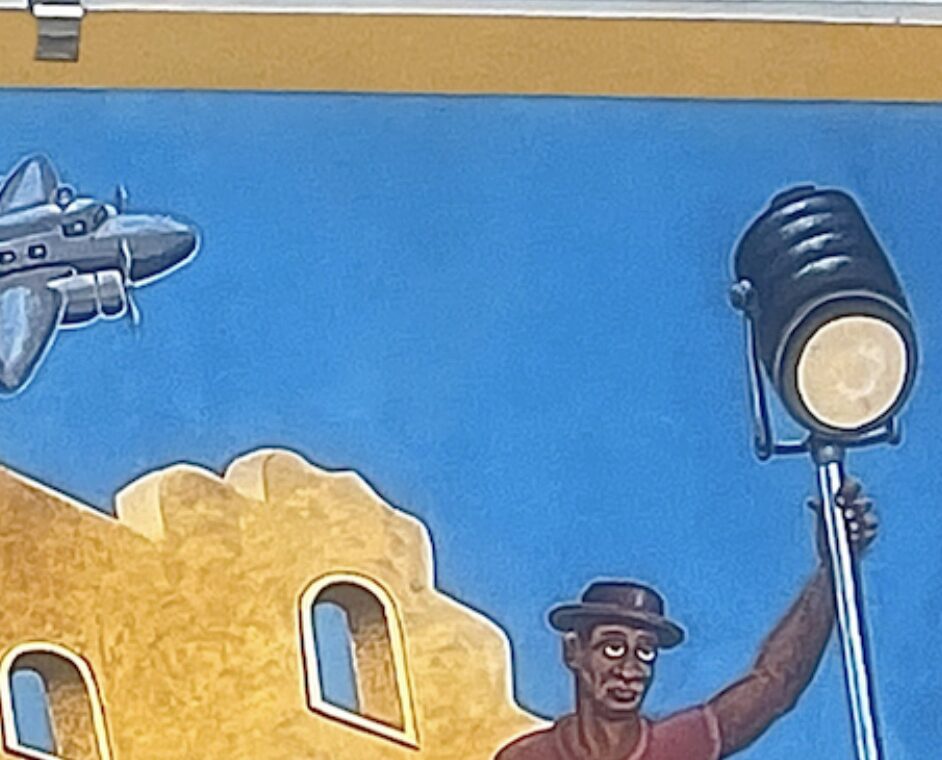
Here is the photo of the mural after extraction of the gargantuan beehive and then the mural’s restoration.
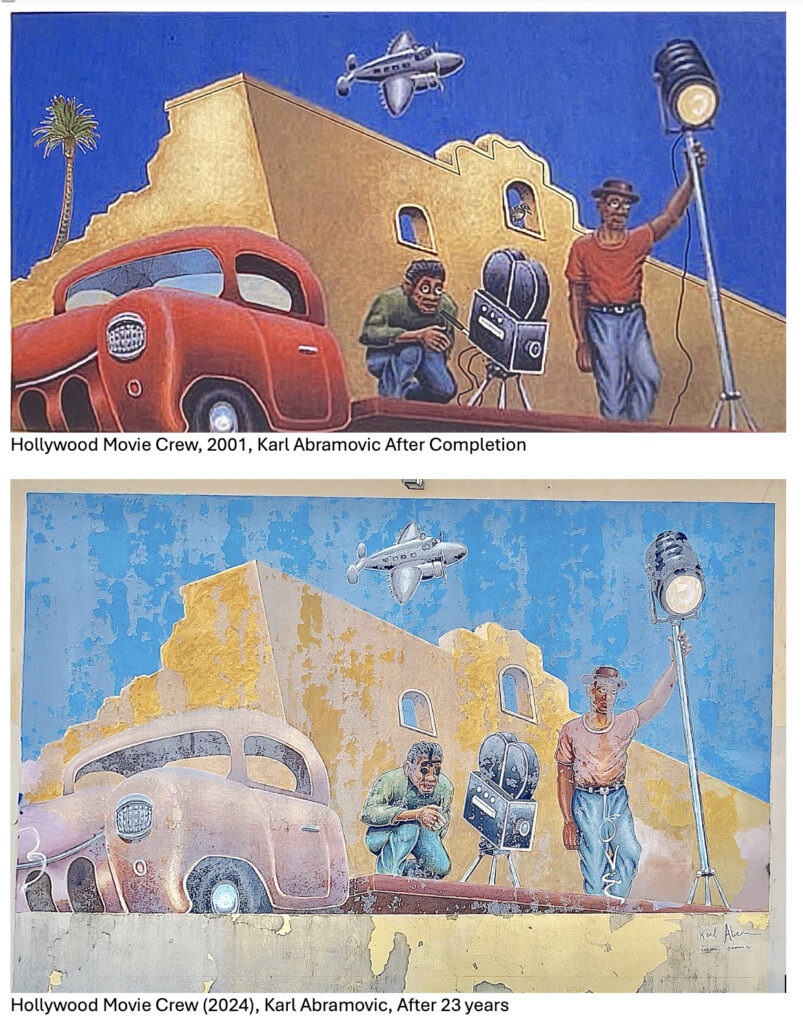
A comparison of the before condition of the 25 year old mural and what it’s stable, restored appearance after mural restoration treatments in 2024
Fine Art Conservation Laboratories has been saving murals since 1975, an effort which began in Italy and has continued to several countries and states within the U.S. Just recently, in the interim of the bee removal, an emergency project was accomplished in Oahu, Hawaii, where two large and historic murals were saved from demolition with the help of FACL and Scott M. Haskins. The murals were painted by Edward T. Grigware in 1958 and are known worldwide. Their loss would have been devastating had Scott not been consulted, assessed, and created a treatment plan that allowed them to be safely removed.
“Queen Kapiolani Defying the Goddess Pele” by Edward T. Grigware (before restoration and removal services – photo provided by Scott M. Haskins)
Removing each of the two 11’ x 33’ murals in five separate panels, just as they were originally installed by the artist (photo provided by Scott M. Haskins)
The work being undertaken on “Hollywood Movie Set” is in collaboration with the artist Karl Abramovic. Working with living artists to preserve, restore, or ensure the longevity of their works during their initial creation is something often done in collaboration with the local governments and municipalities who sponsor the public art. However, FACL consults on private projects as well.
Besides saving the bees that had made their home in Abramovic’s “Hollywood Movie Set,” the biggest takeaway from this mural restoration project for artists and those who maintain public art concerns the choice of varnish. This mural’s varnish, which was twenty years old, did a poor job of protecting the work and ended up looking very bad. The choice of product was made without consulting art restoration professionals, who carefully vet products for long term preservation, aging, and other issues. Hence, this mural has fallen apart rather quickly, despite its location in a very desirable place for preservation (no direct sun, for example).
Another instance of poorly chosen varnish can be seen in Porterville, California, on a beautiful mural sponsored by the city. The 100-foot mural, located in the downtown central park, utilized a bad quality varnish similar to the Hollywood Movie Set, which pulled apart the paint layers and required extensive work last year by the artist in addition to FACL’s stabilizing treatments.
“Marching Through Time” by Glen Hill
(after restoration – photo provided by Scott M. Haskins)
Original paint being pulled off the mural due to original coating varnish… in other words, always consult an art restoration professional when choosing varnish!
(Photo provided by Scott M. Haskins)
FACL offers professional consultations and art restoration services in the Los Angeles and Orange County areas, as well as in Santa Barbara County, Riverside, Carmel/Monterey, Las Vegas, and Utah. If you are seeking an expert opinion on your painting, mural, or other work of art, feel free to reach out to Scott M. Haskins:
Phone: (805) 570-4140
Email: faclartdoc@gmail.com
This blog post has been syndicated at ExpertClick.com. What does it mean that this article is “ syndicated”?
Its a bit of a coup to get an article syndicated, and its certainly prestigious, as additional “proof” that the info and the author are considered far and wide authoritative and an expert in the field. So, enjoy and trust our content!! This article was syndicated for USA national redistribution.
When something is published, usually by a news source, and is made available through different venues for redistribution then it is said to be syndicated. Publications that are syndicated are usually considered of value as being from an expert, educational, new worthy or valuable for wide popular interest. See syndication page at the renowned publicity site: https://www.expertclick.com/NRWire/
This website’s syndication included:
1) Included in the ExpertClick Press Room as a ‘press release.’ (different than a ‘news release’)
2) Included in the ‘Speaker Bureau Platform Page.’
3) Shown on the front page of ExpertClick, in rotation with other most recent posts.
4) Shown in the ‘News Release Results page.’
5) Included on optimized for searches on all my topics of expertise.
6) Shown via RSS linked from the Press Room. (A specific way news is actively distributed within the industry)
7) Shown in the full RSS feed from ExpertClick. (Another, different specific way news is actively distributed within the industry)
8) Syndicated to LexisNexis.com As of 2006, the company had the world’s largest electronic database for legal and public-records related information, distributor of academic content and expert opinion.
This article has been syndicated at https://www.expertclick.com/NRWire/
Sources:

